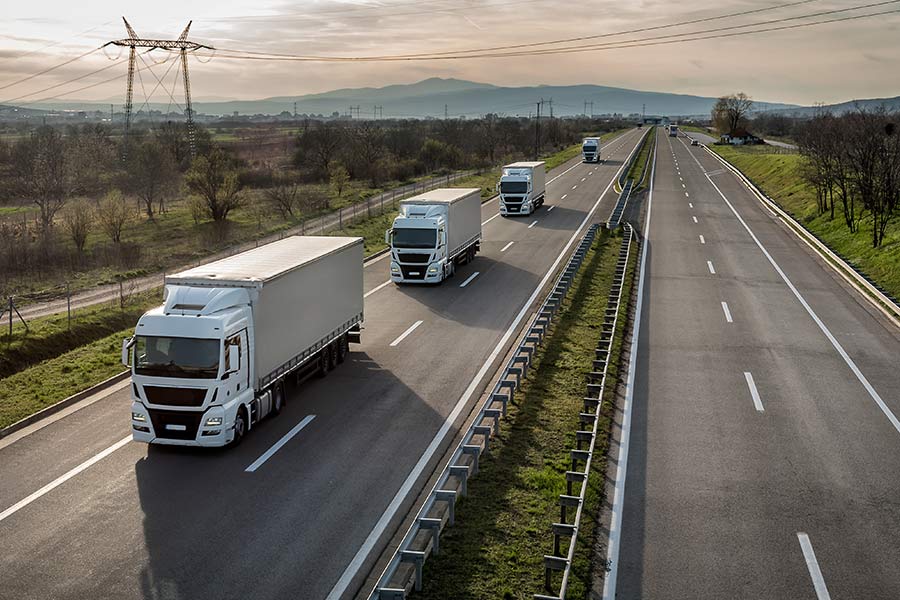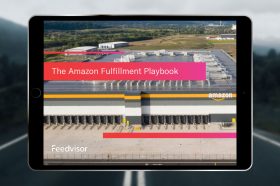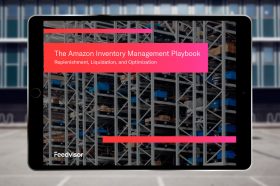Resources - Blog
3 Key Elements to Amazon’s Supply Chain Strategy

Stay on top of the latest e-commerce and marketplace trends.
There are countless variables that have made Amazon the e-commerce leader that it is today, but its state-of-the-art supply chain model is by far the most critical element to the company’s colossal success. What began in Amazon founder and CEO Jeff Bezos’s garage roughly 25 years ago, with books as the sole product, has surmounted to one of the largest and most efficient supply chain operations in the world.
Drive Your Amazon Performance With 30 Days Free of "AI-First" Optimization Technology
Stay on top of the latest e-commerce and marketplace trends.
Interestingly, Amazon’s supply chain model today is fundamentally the same as it was back then, just on a much larger scale and empowered by technological innovations that streamline operations and efficiency. It is not out of reach for other, smaller e-commerce businesses or Amazon merchants to optimize their own supply chain models to function as quickly and efficiently.
For those looking to scale their online operations, take a page out of Amazon’s book to discover ways to enhance productivity, expand your reach, and increase your profits. Below are the three key elements to Amazon’s supply chain management that enable its speed, efficiency, and overall success, from which you can learn and apply to your own supply chain strategy.
1. A Vast Warehouse and Distribution Network
Undoubtedly, Prime delivery is a critical component to Amazon’s remarkably loyal customer base. Nearly half of consumers visit Amazon at least a few times a week, and 83% of Prime members cite free two-day shipping as the most compelling benefit of Prime membership, according to Feedvisor data.
To maintain that customer loyalty, and attract new customers to its Prime program, Amazon earlier this year announced an investment of $800 million to expand the availability of free one-day shipping to Prime members. Such an ambition is only achievable due to Amazon’s more than 20-year expansion of its fulfillment and logistics network.
The company currently operates more than 175 fulfillment centers across the globe, occupying more than 150 million square feet of space, with 75 fulfillment centers and 25 sortation centers in North America alone. In addition, Amazon is estimated to operate roughly 500 warehouses worldwide. This global presence, primarily located near major metropolitan areas, puts distribution and inventory control in the hands of Amazon, allowing the company to rapidly fulfill orders for customers at a lesser cost.
Amazon merchants can leverage the company’s vast fulfillment network for their own operations via the Fulfillment by Amazon (FBA) program, which requires sellers to ship their products to Amazon fulfillment centers for the company to pick, pack, and ship orders as well as provide any necessary customer support.
In addition, Amazon also offers its FBA Onsite program, a combination of FBA and Seller-Fulfilled Prime (SFP) in which Amazon optimizes the seller’s warehouse with its own warehouse management software. Sellers continue to store their inventory in their own locations and maintain control over their products while Amazon is responsible for picking up orders from a seller’s warehouse and choosing the most effective fulfillment method.
2. A Diversified Delivery Fleet
To deliver orders to the doors of customers, Amazon leverages a variety of transportation methods and delivery partners to keep up with demand and expediency. Amazon-branded trailer trucks carry more than 2,000 boxes at a time, bringing orders from fulfillment centers to sortation centers, where packages are distributed by location and the required delivery speed. From there, items are distributed to the most efficient transportation mode ranging from Amazon trucks and planes to partnered carriers such as UPS and the U.S. Postal Service.
To meet Amazon’s two-day delivery window for Prime members, Amazon employs its airplane fleet, which takes flight from more than 20 airports around the U.S. Each plane has the capacity to carry 30 or more containers, filled with hundreds of boxes. By ground, the company utilizes a fleet of trucks, vans, bikes, and even robots for last mile delivery.
For even speedier delivery options, such as Prime Now’s one- to two-hour window and one-day delivery for Prime members, Amazon is exploring the use of drones that can fly packages straight to customers’ doors, and last year launched the Delivery Service Partners program, which aims to incentivize its employees to launch their own delivery businesses. Amazon will fund up to $10,000 in start-up costs and provide three months of pay to any employee that wishes to participate.
Beneficial to both Amazon and the employee, the Delivery Service Partners program strategically expands Amazon’s delivery network, with partners operating anywhere from 20 to 40 vans and 40 to 100 employees, while employees receive training and ongoing support as well as a key client for their delivery business — Amazon.
3. The Unison of Humans and Automation
Indeed, Amazon’s extensive network of employees and partnerships enables the company to fulfill speedy deliveries practically anywhere in the world, but it is its embracement of innovative technology and automation solutions that ensure streamlined processes and efficiency.
In its warehouses and fulfillment centers, Amazon utilizes robotics to pick and pack orders as well as stack and store inventory. This allows the company to expedite its processes beyond human speed while also alleviating manual labor for its employees, which frees up time and funds to be allocated to other tasks and business initiatives.
Amazon first began utilizing robotics after its 2012 acquisition of Boston-based Kiva Systems, which has since been renamed Amazon Robotics. Today, its team of roboticists and engineers work closely with associates to incorporate new technologies to streamline processes, improve safety, and increase efficiency. By working with robotics, Amazon can store 40% more inventory, which ultimately makes it easier to fulfill Amazon Prime orders on time and provide a consistently convenient and positive customer experience.
In addition, Amazon this year launched its robotic delivery system, Amazon Scout, which features six-wheeled autonomous delivery robots designed to delivery packages to customers’ doors via sidewalks at a walking pace. The company this week announced its plans to expand Amazon Scout last-mile delivery robot service to customers in Southern California, moving beyond its initial testing area of the Pacific Northwest.
Final Thoughts
Certainly, to build such a massive and innovative supply chain model requires enormous investment, and it took Amazon more than 20 years of trial and error to grow into the operation it is today. However, with the same agility, innovation, and customer-focused approach, the same can be achieved on a smaller scale for other e-commerce businesses and Amazon merchants. By leveraging these strategies and continuously optimizing your operational processes, you can expand your network and reach as well as increase the convenience of your services to fuel customer loyalty — which is essential to any business’s bottom line.
Learn what Feedvisor can do for your business.
When you partner with Feedvisor, you automatically receive access to our true, AI-driven technology and hands-on team of e-commerce experts. Contact one of our team members today to learn more about our end-to-end solution for brands and large sellers on Amazon, Walmart, and e-marketplaces.




